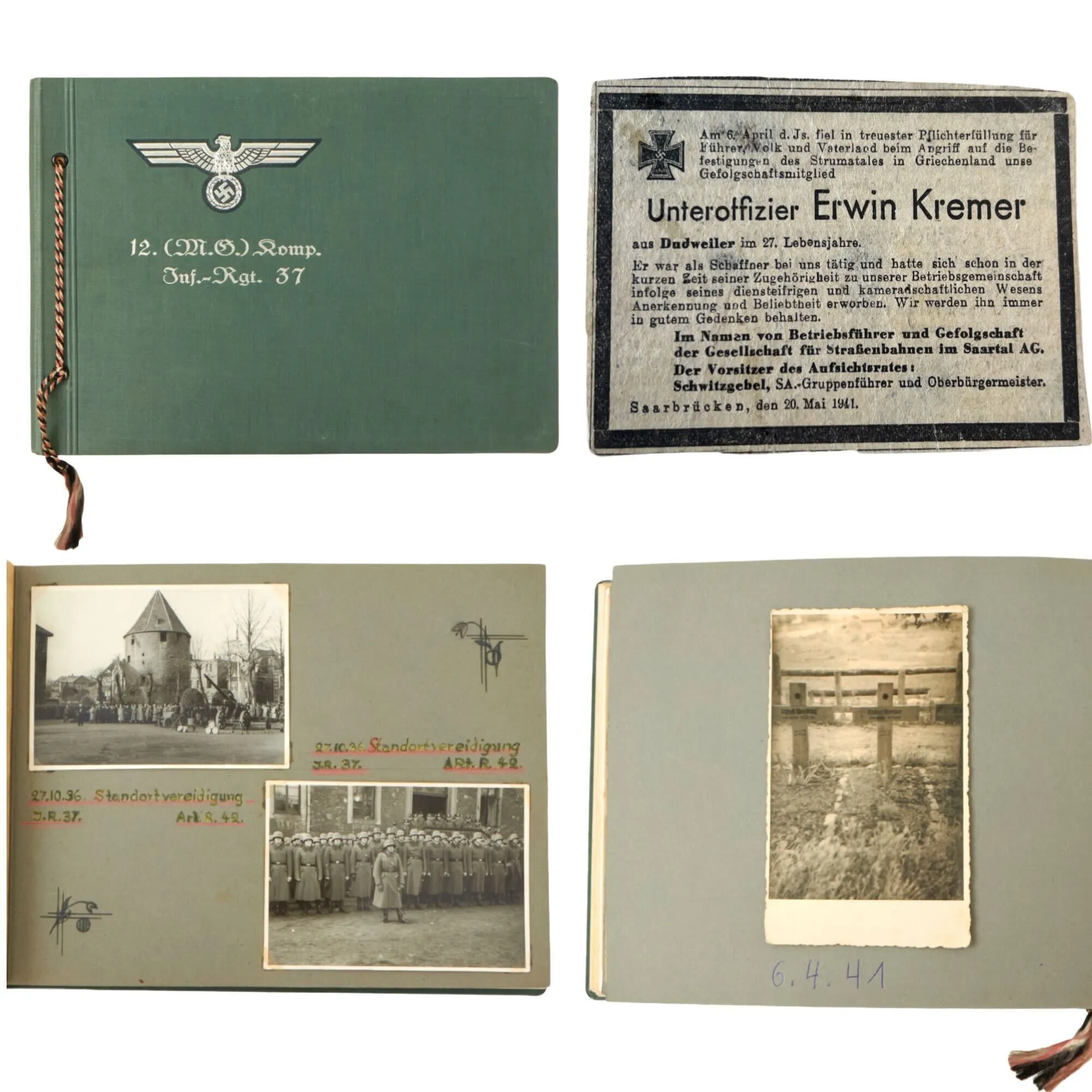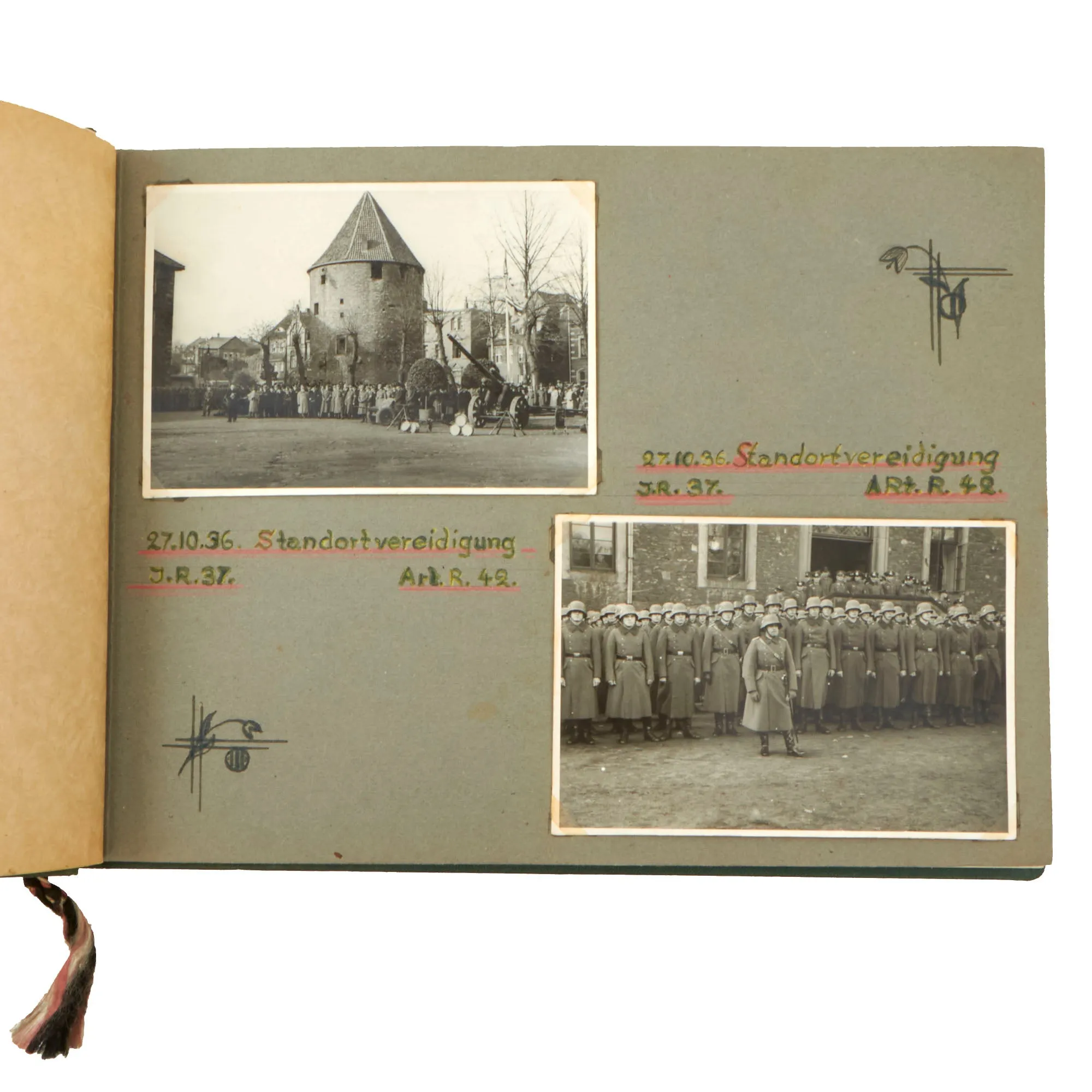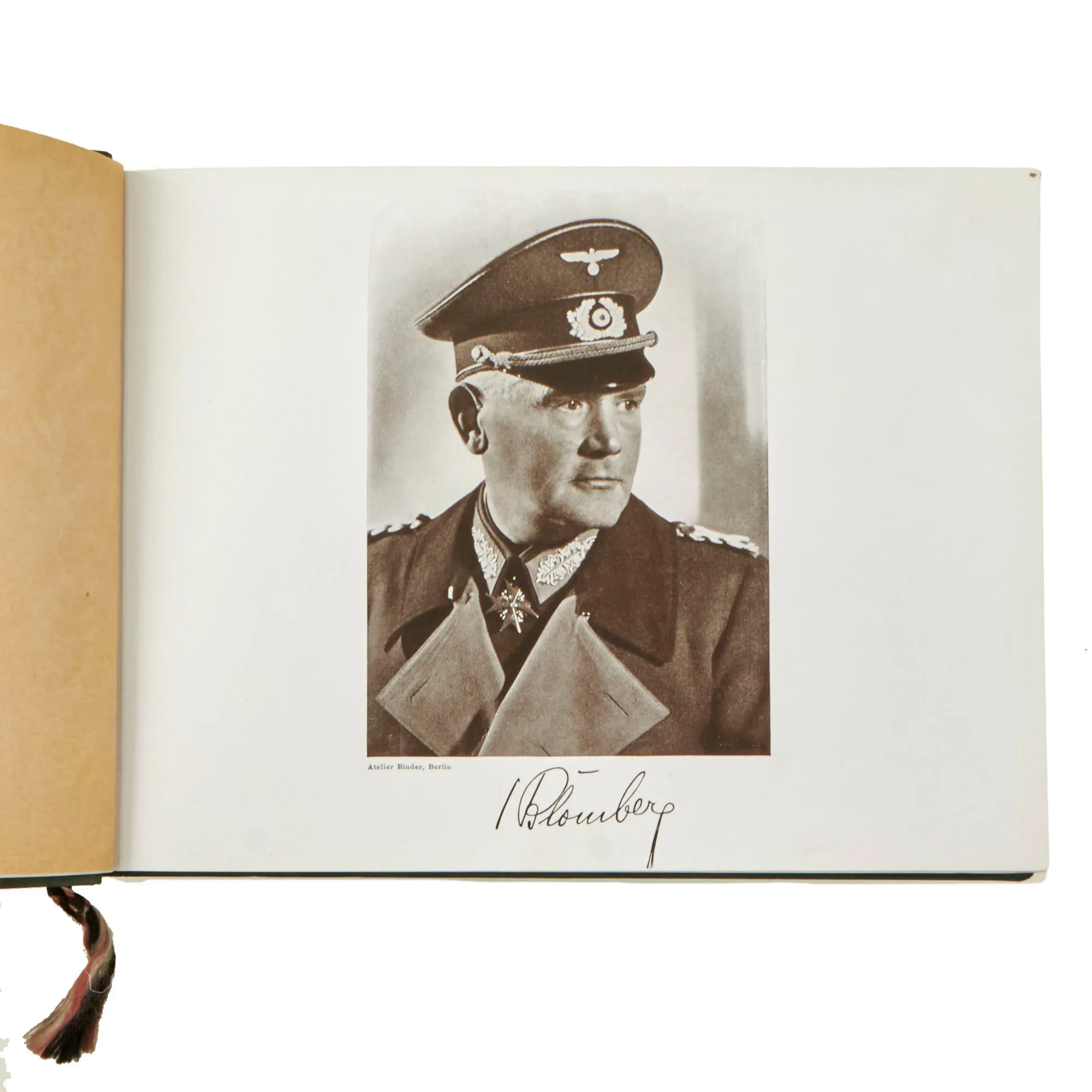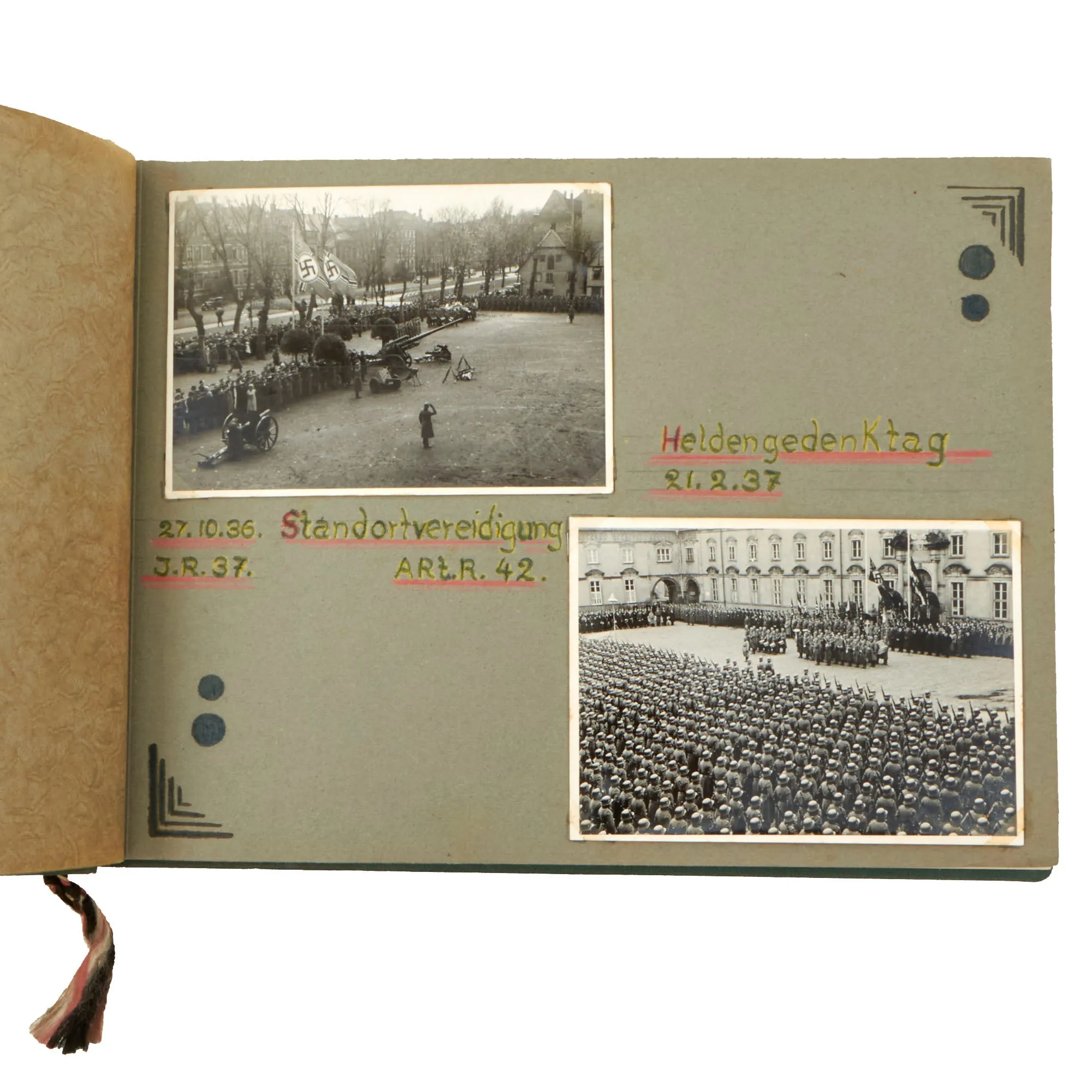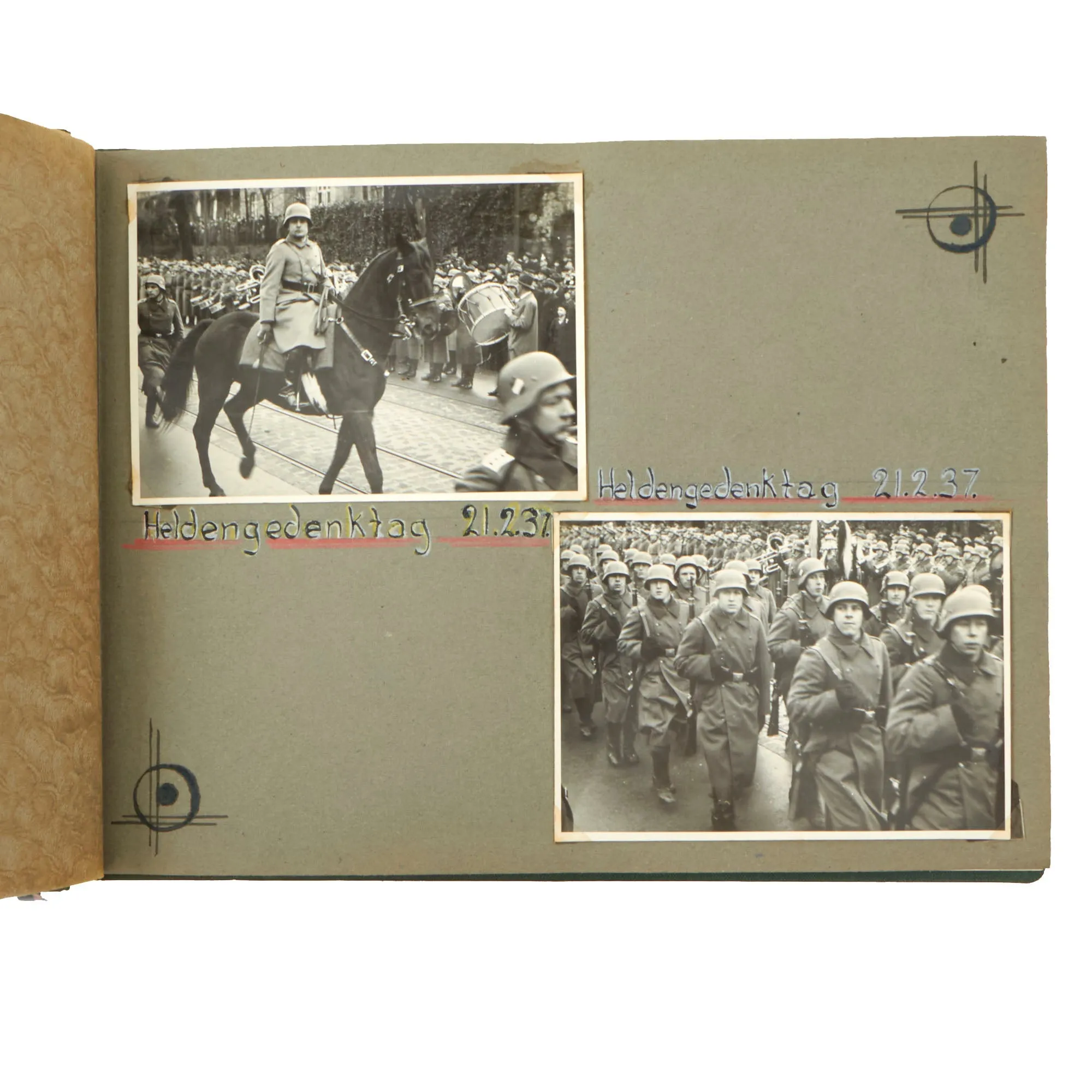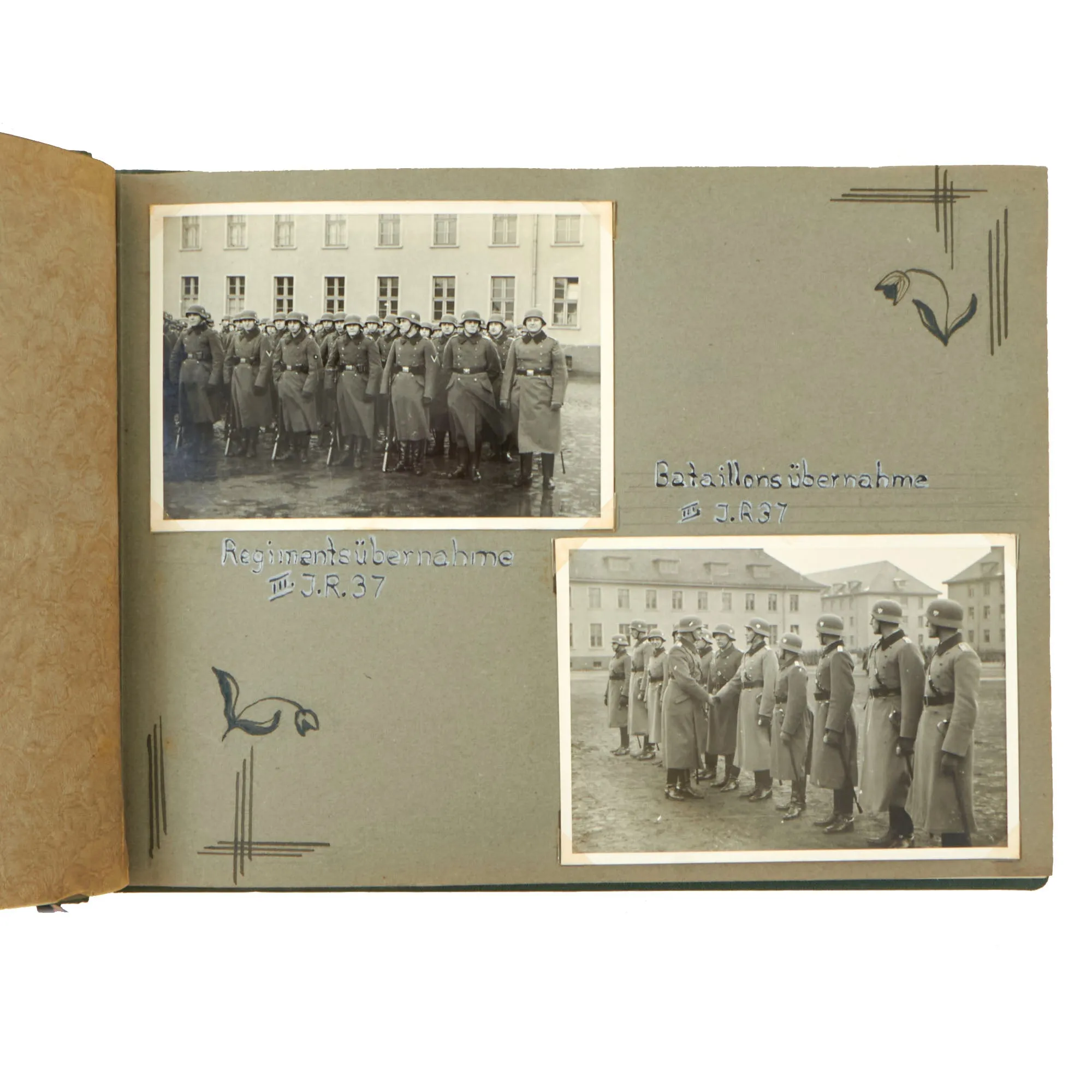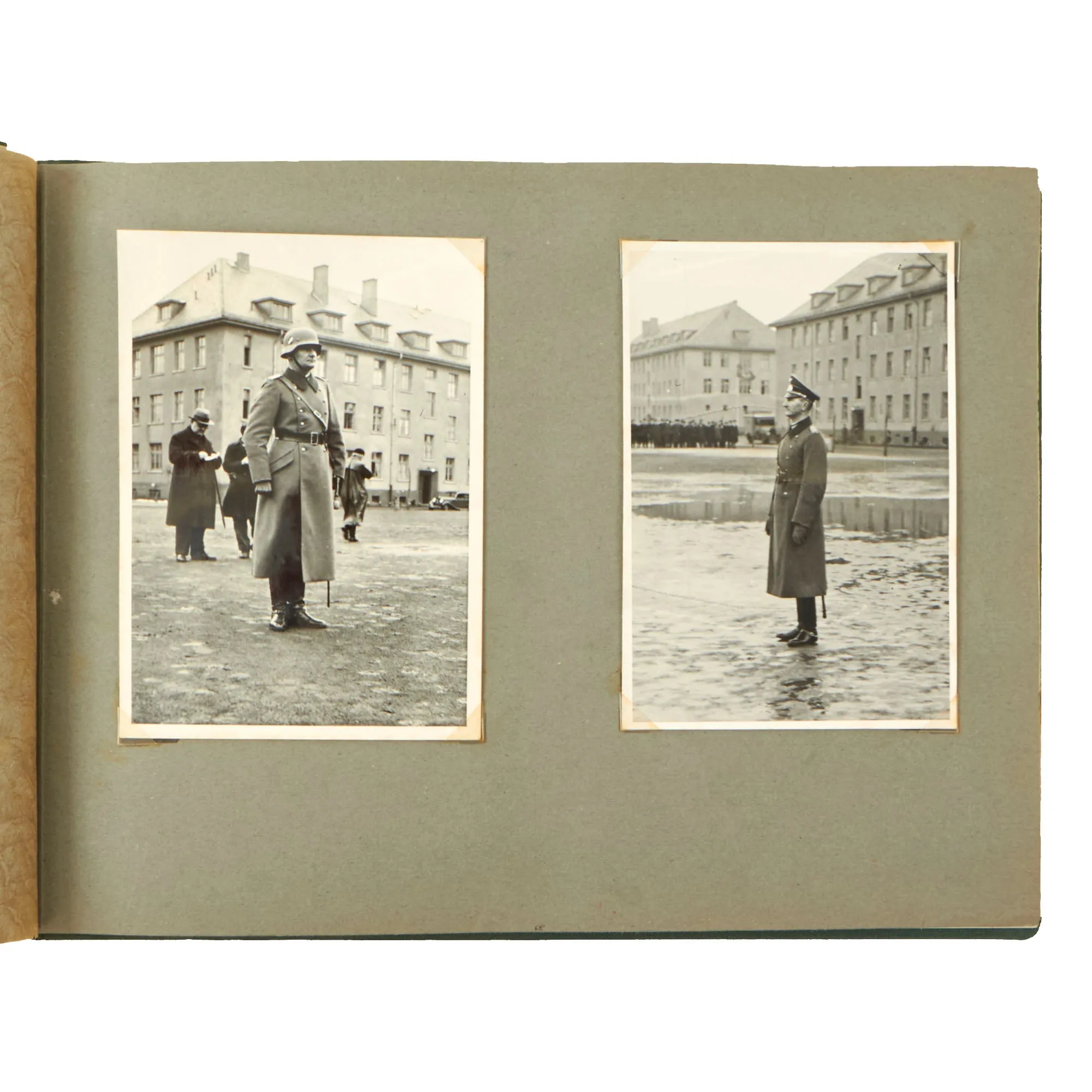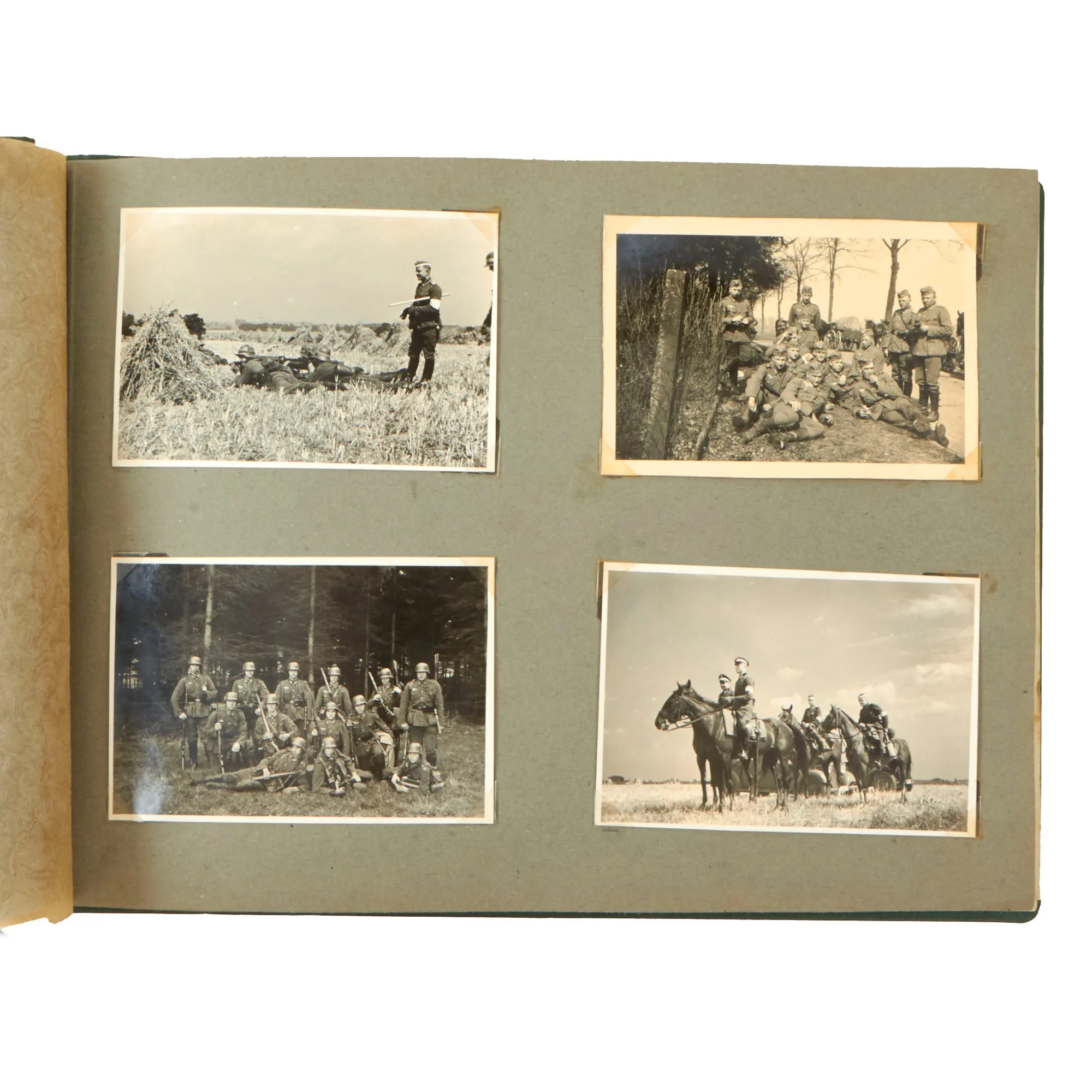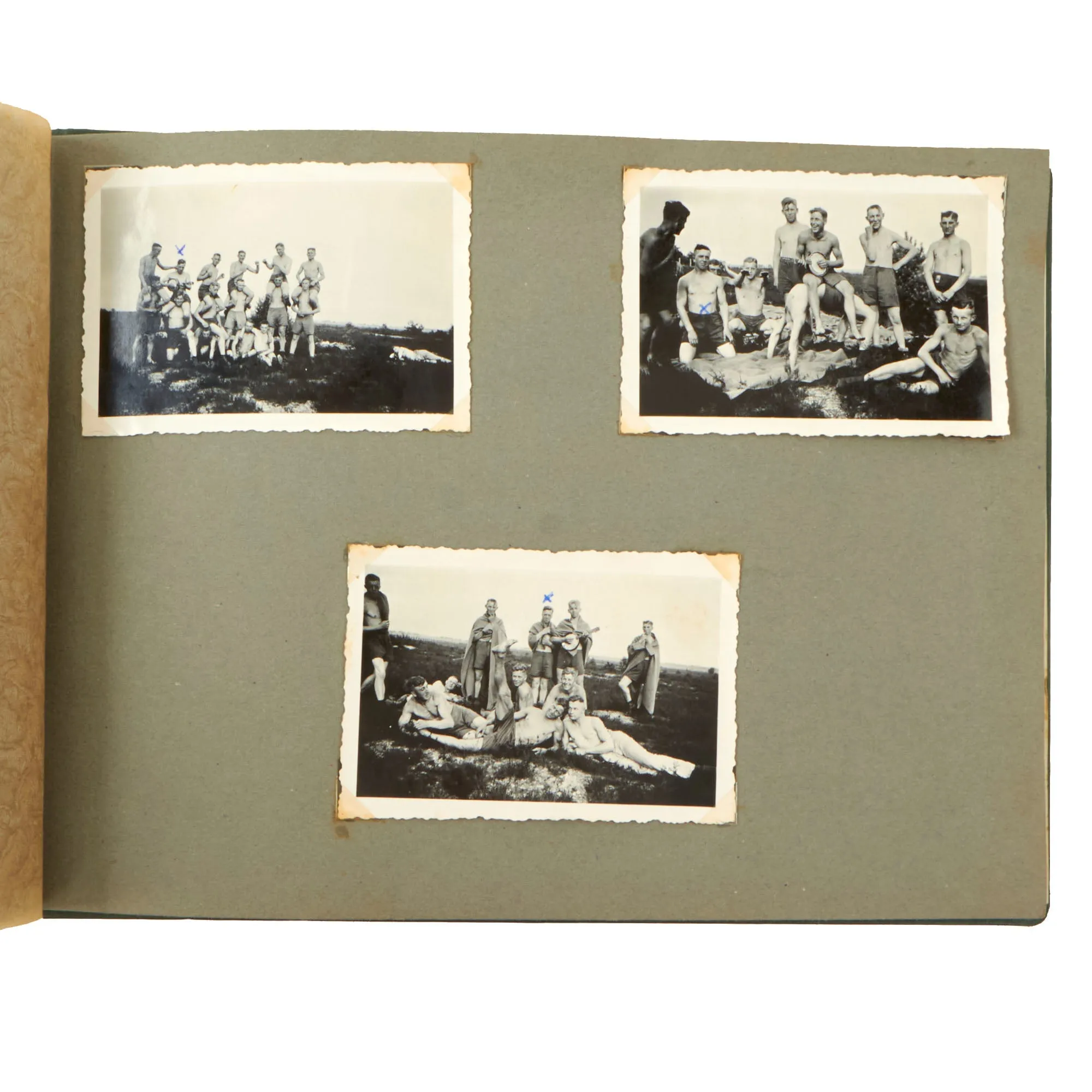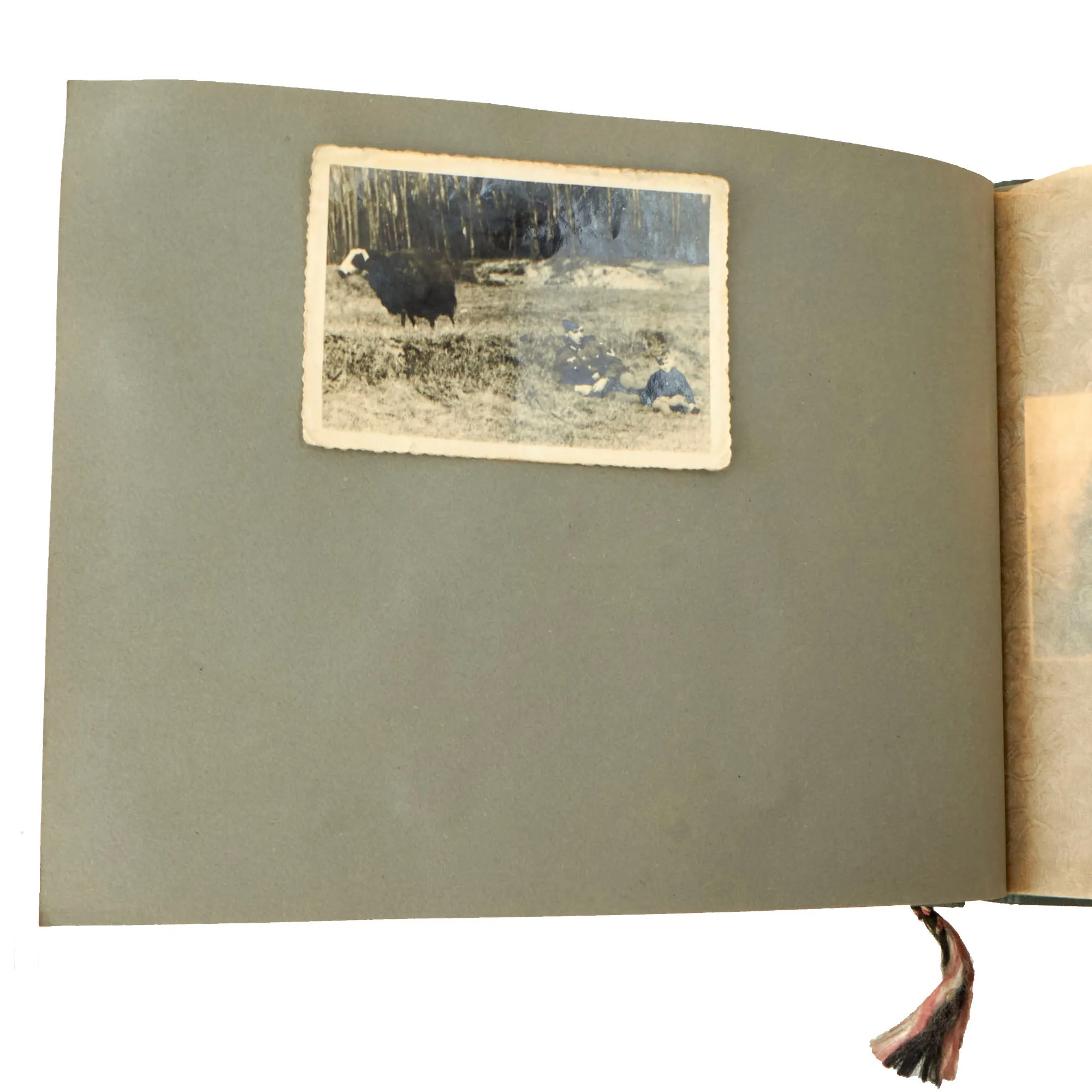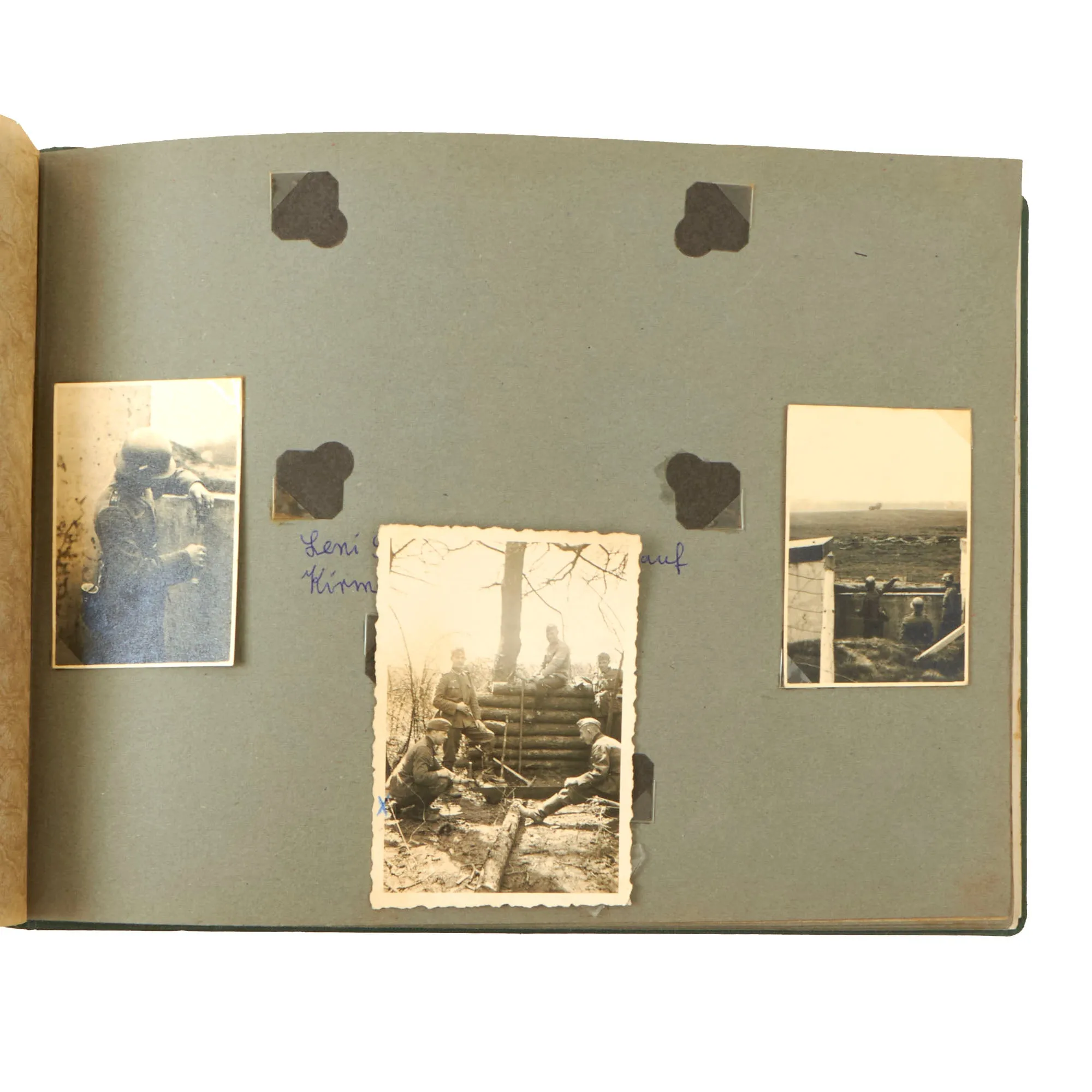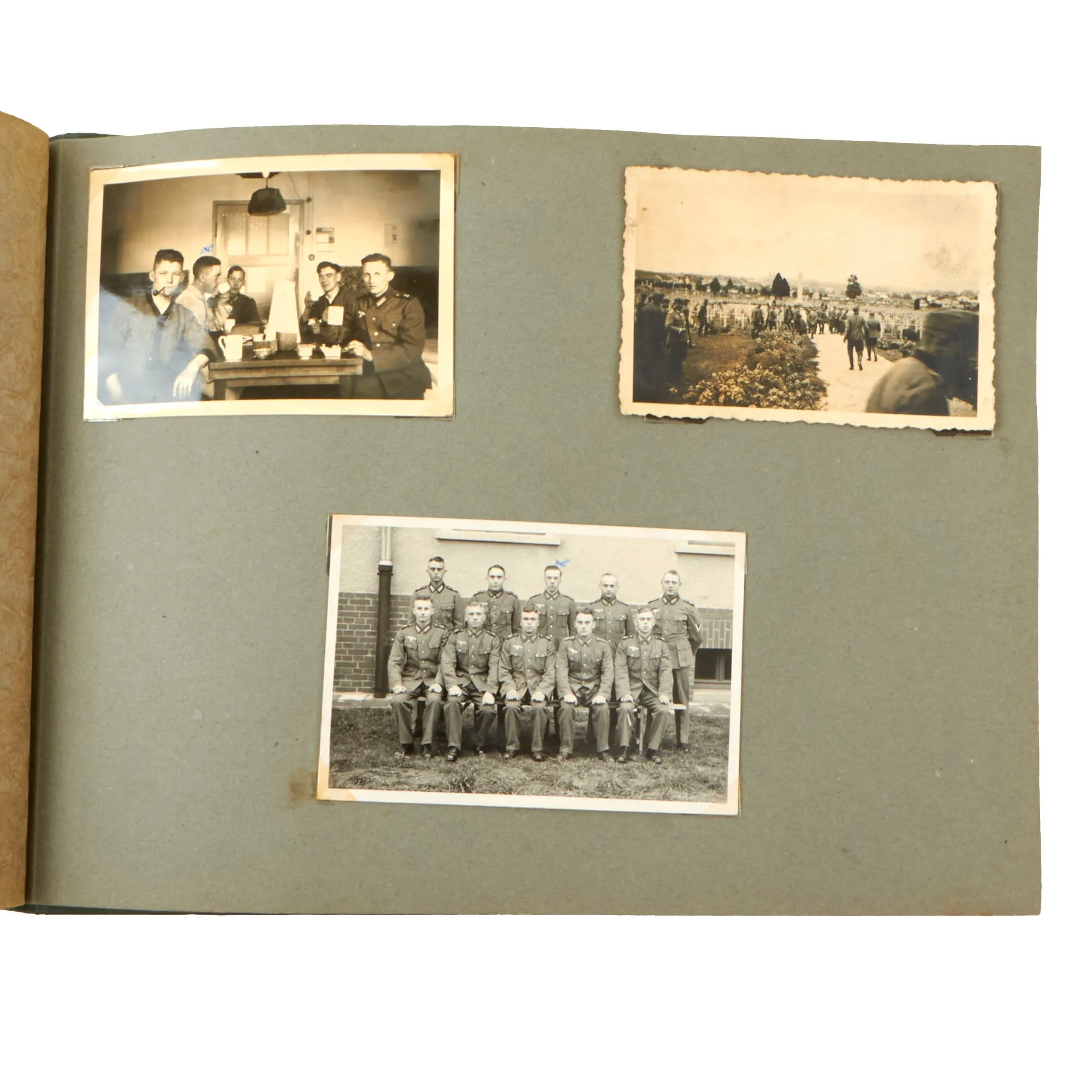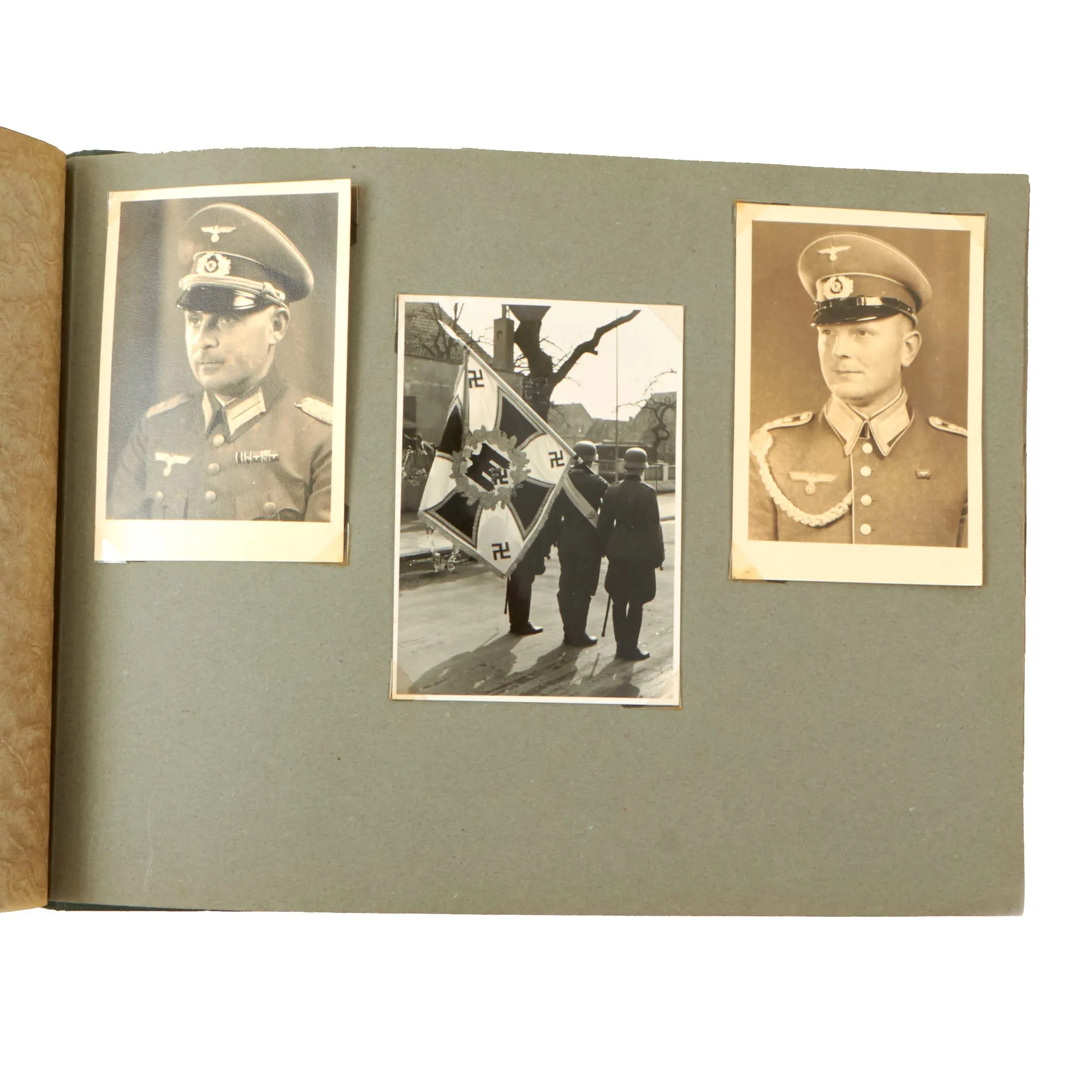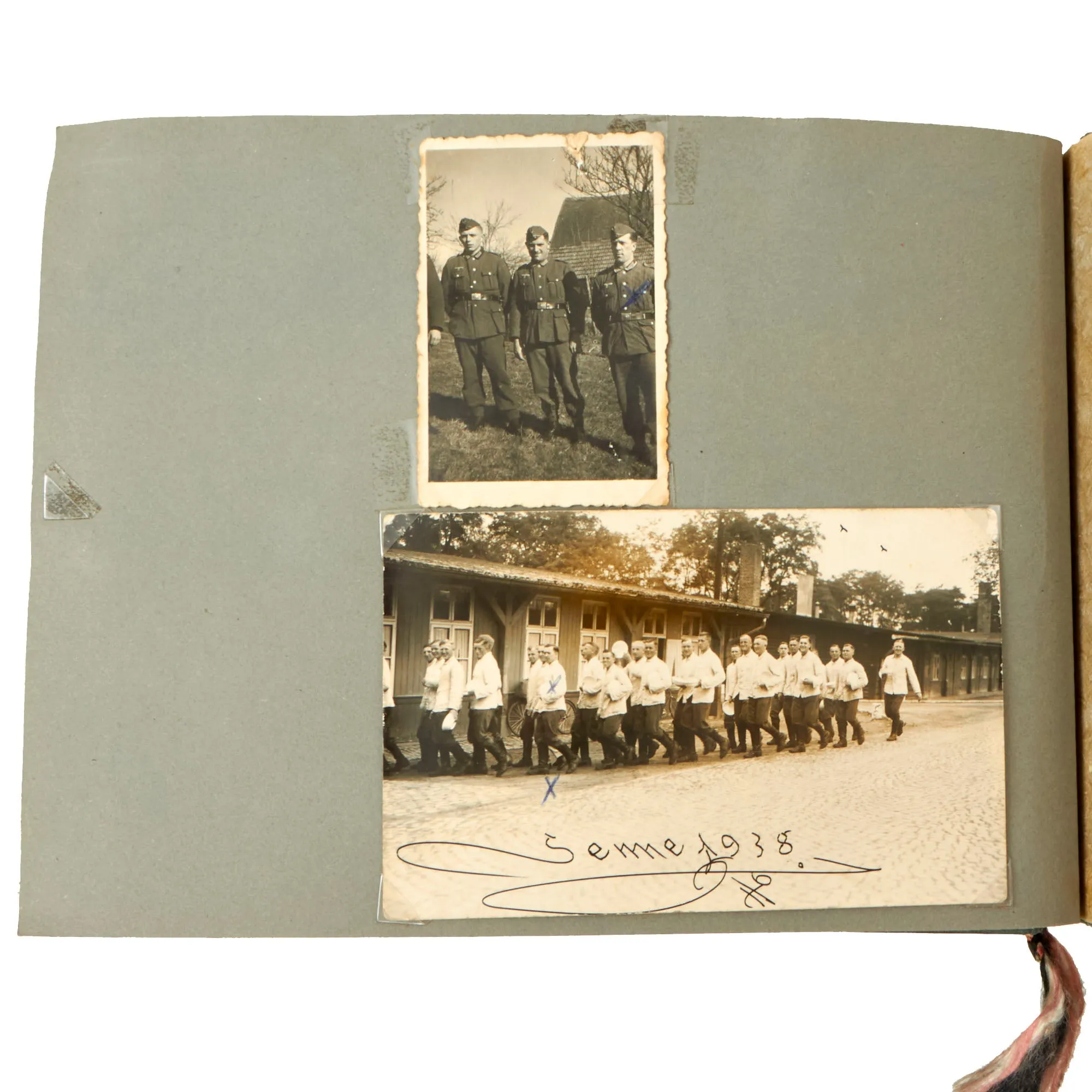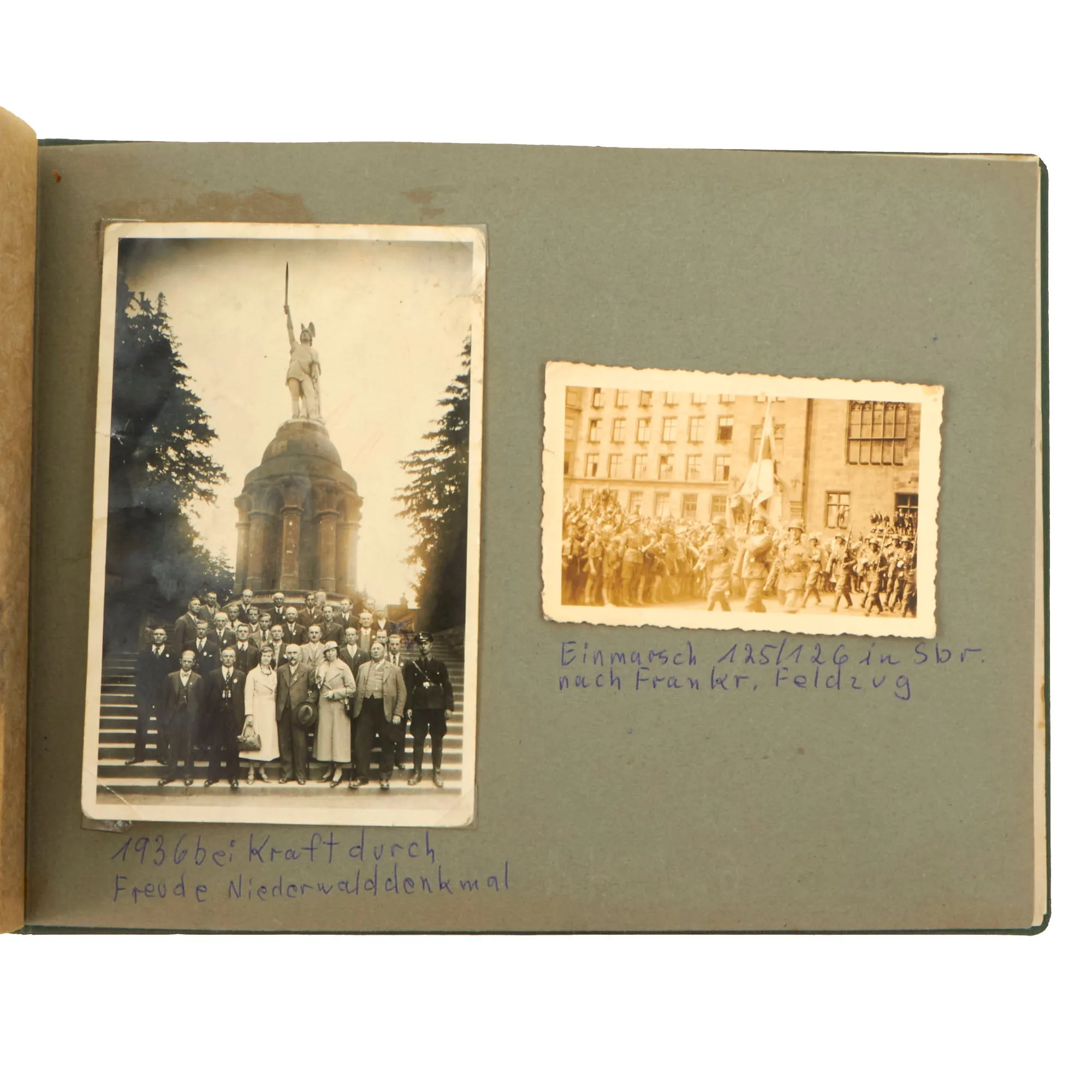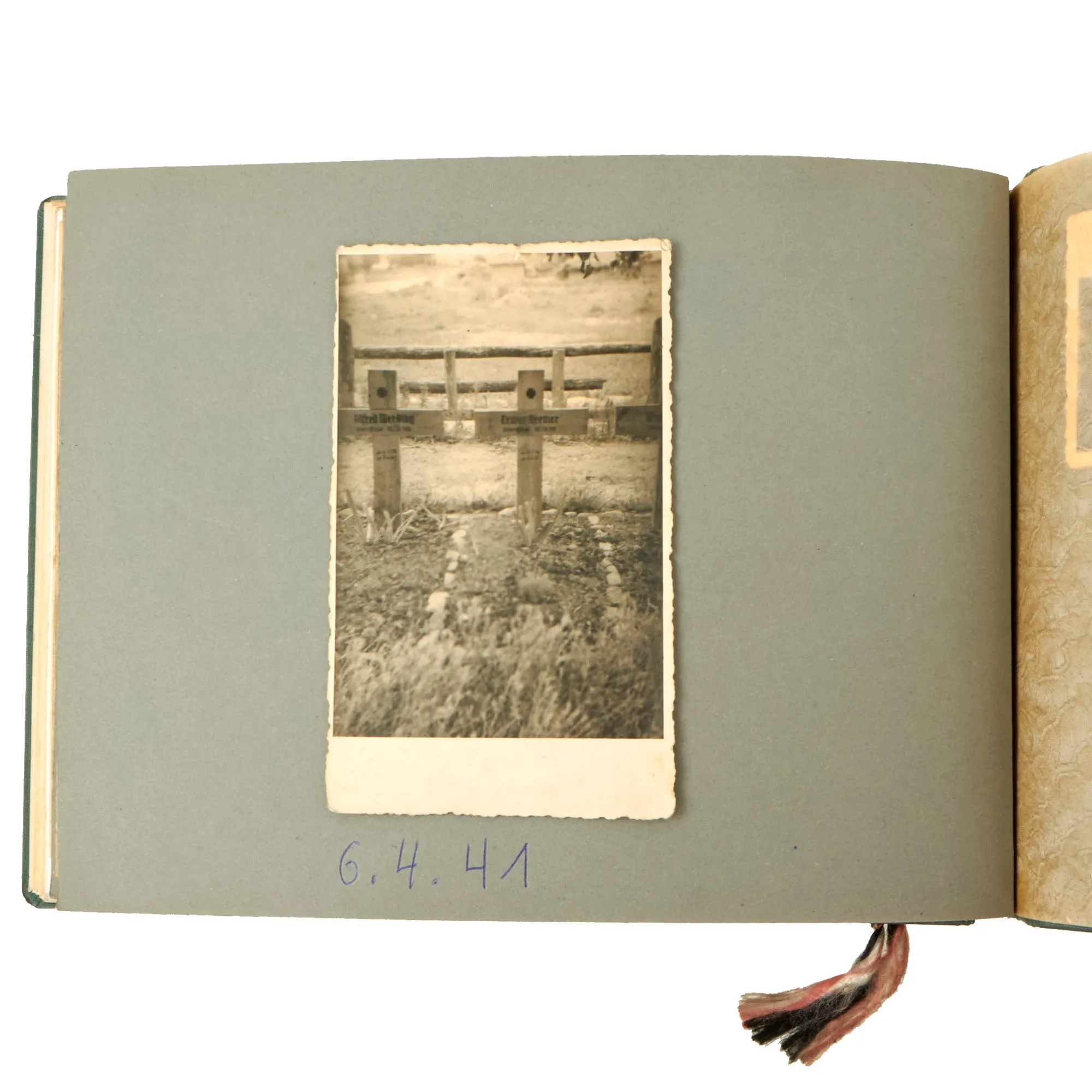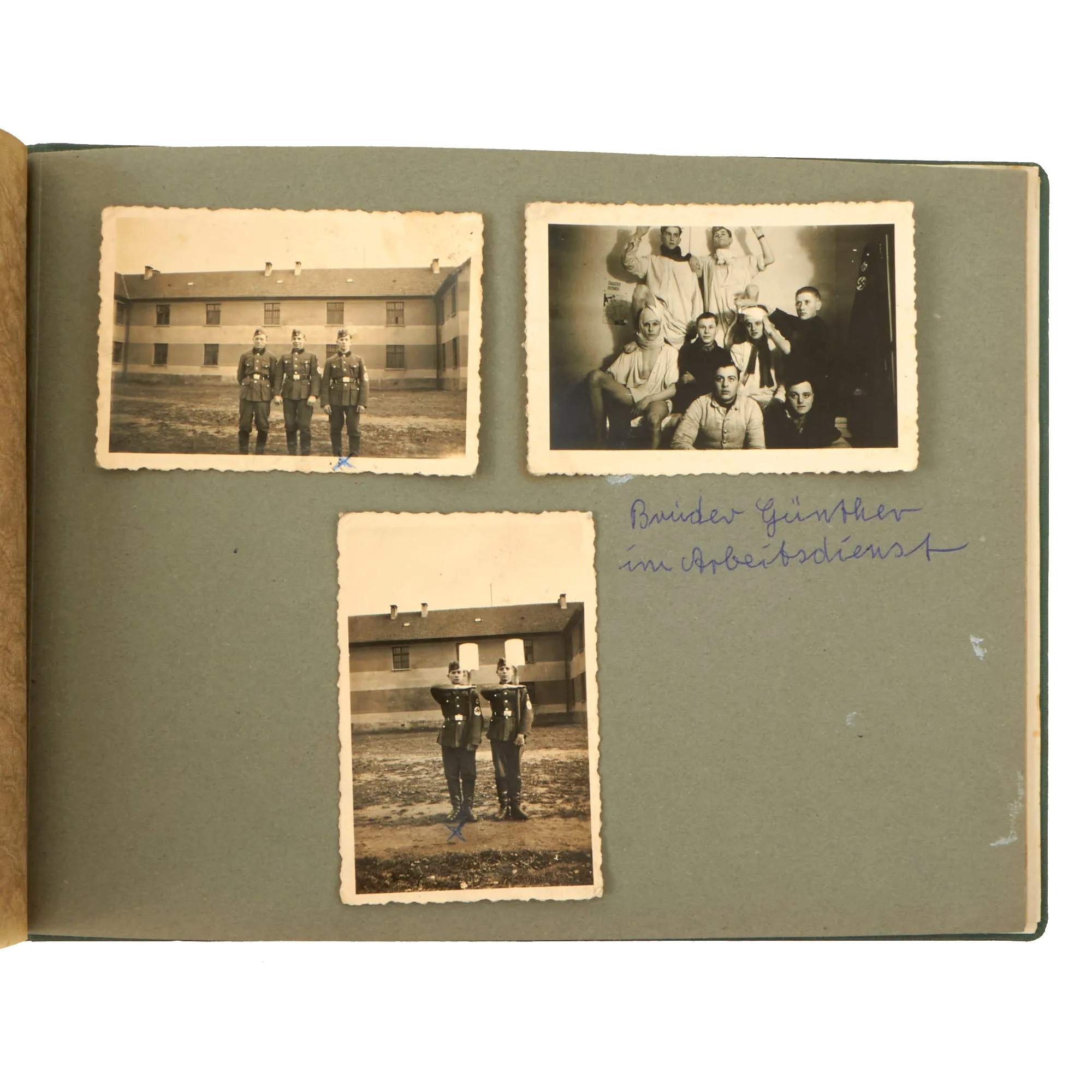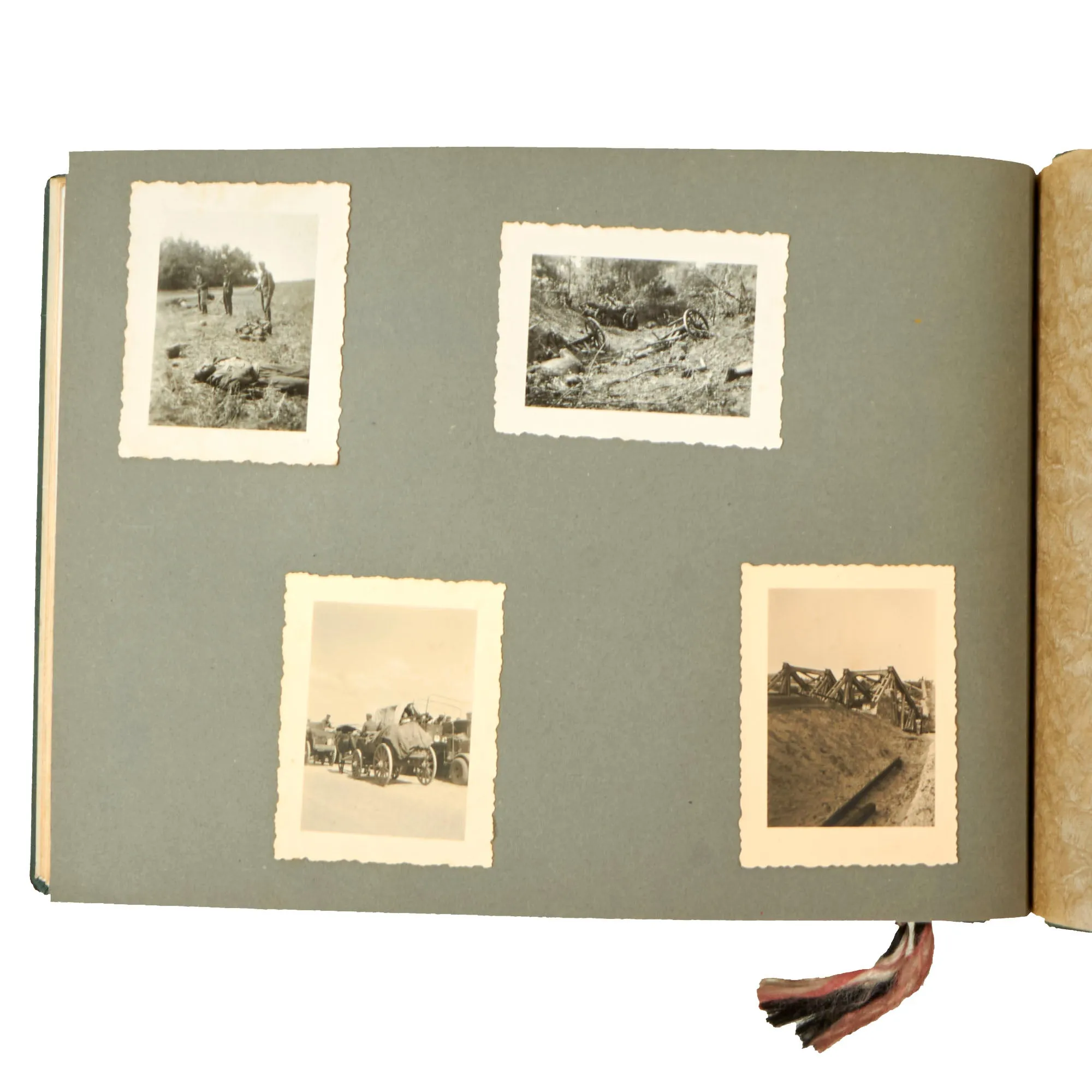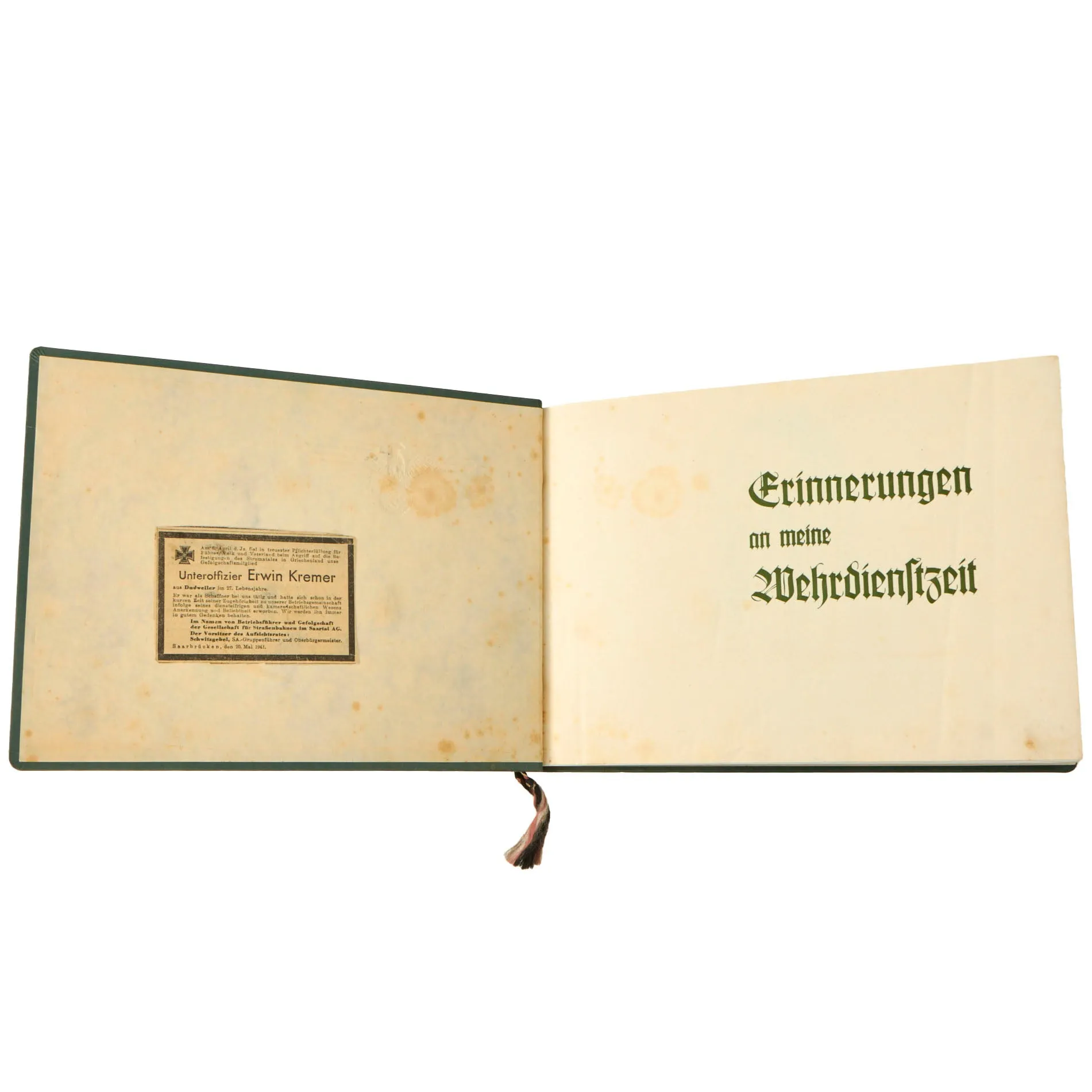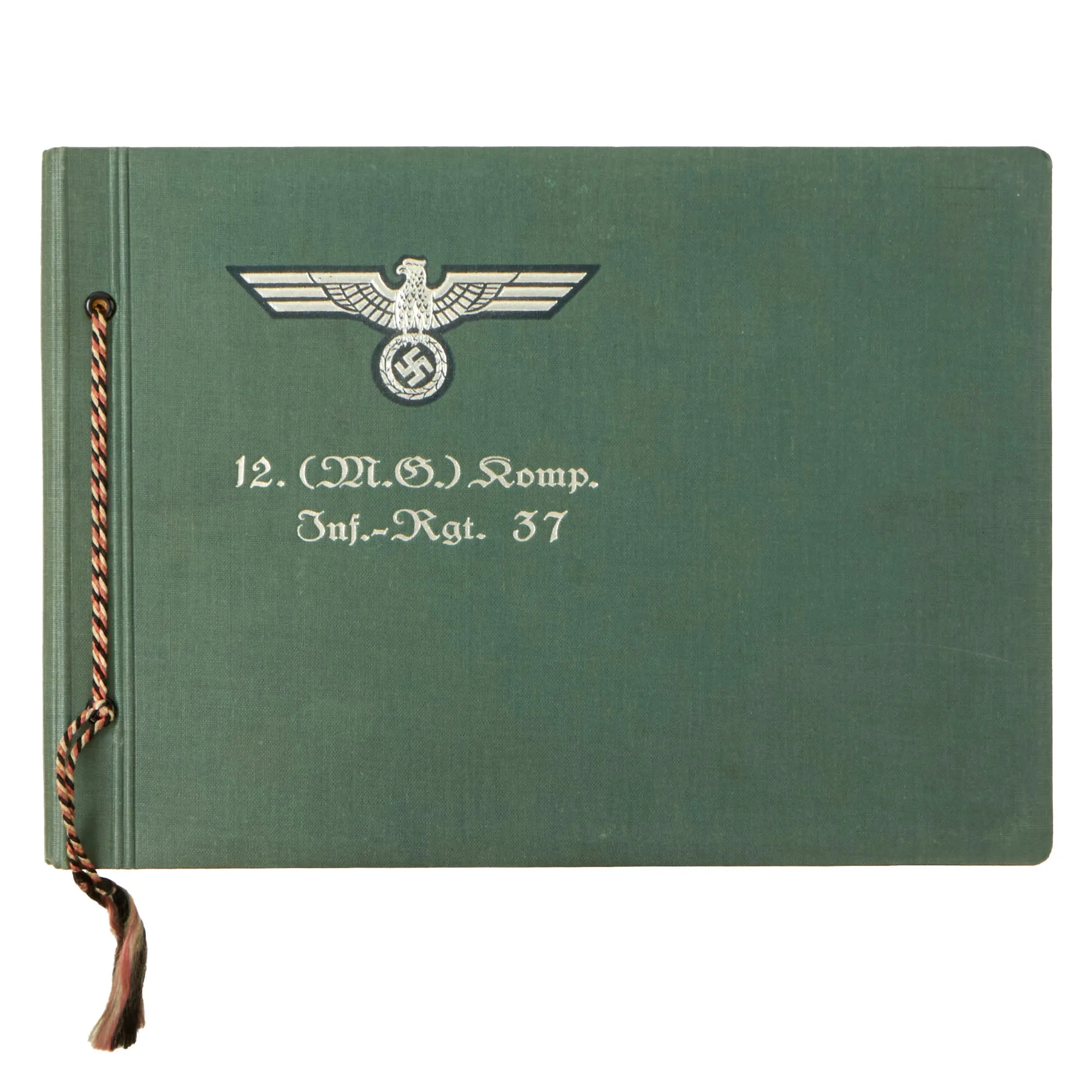Original Item: One-of-a-kind. A wonderful personal photo album, marked on the front with the Wehrmachtadler Eagle, over regimental designation 12. (M.G.) Komp. Inf.-Rgt. 37, or 12th Machine Gun Company 37th Infantry Regiment. Inside the front cover is the standard Erinnerungen an meine Wehrdienstzeit (Memories of my Military Service), message, and on the back of the front cover is a small memorial clipping which is supposedly for the soldier whom this belonged to, Unteroffizier Erwin Kremer announcing he was killed on April 6th, 1941, during the attack at Struma Valley in Greece. The back still has a visible maker mark from a company in LEIPZIG, and the album overall measures approximately 10.5" x 7.5".
Overall there are 29 pages in total, including the title page. Following this are 5 pages showing portraits of AH and other top level military officials. After this are 18 thicker pages for photos with "onion skin" separators to keep the pages from sticking together in the front, and about 5 pages for writing messages at the back. The scrapbook is in amazing shape overall with few flaws minus missing a few photographs.
There are 55 photographs of various sizes, showing all manner of scenes. The photos are dated around 1936-1941, the year he died. These include early photos of him in formation in 1936, and some pages have illustrations with dates. Some photos are of tanks, vehicles, one of AH, and one of the very last photos is of his grave, dated April 6th, 1941. We assume the album was completed by one of his fellow soldiers and/or family.
This is a phenomenal scrapbook named to a German soldier killed in action during the German Invasion of Greece in April 1941. This is very early in the war, so there’s much research to be done on this young man. Comes ready for further research and display.
The German Invasion of Greece
At dawn on 6 April, the German armies invaded Greece, while the Luftwaffe began an intensive bombardment of Belgrade. The XL Panzer Corps began their assault at 05:30. They pushed across the Bulgarian frontier into Yugoslavia at two separate points. By the evening of 8 April, the 73rd Infantry Division captured Prilep, severing an important rail line between Belgrade and Thessaloniki and isolating Yugoslavia from its allies. On the evening of 9 April, Stumme deployed his forces north of Monastir, in preparation for attack toward Florina. This position threatened to encircle the Greeks in Albania and W Force in the area of Florina, Edessa and Katerini. While weak security detachments covered his rear against a surprise attack from central Yugoslavia, elements of the 9th Panzer Division drove westward to link up with the Italians at the Albanian border.
The 2nd Panzer Division (XVIII Mountain Corps) entered Yugoslavia from the east on the morning of 6 April and advanced westward through the Strumica Valley. It encountered little resistance, but was delayed by road clearance demolitions, mines and mud. Nevertheless, the division was able to reach the day's objective, the town of Strumica. On 7 April, a Yugoslav counter-attack against the division's northern flank was repelled, and the following day, the division forced its way across the mountains and overran the thinly manned defensive line of the Greek 19th Mechanised Division south of Doiran Lake. Despite many delays along the mountain roads, an armoured advance guard dispatched toward Thessaloniki succeeded in entering the city by the morning of 9 April. Thessaloniki was taken after a long battle with three Greek divisions under the command of General Bakopoulos, and was followed by the surrender of the Greek Eastern Macedonia Army Section, taking effect at 13:00 on 10 April. In the three days it took the Germans to reach Thessaloniki and breach the Metaxas Line, some 60,000 Greek soldiers were taken prisoner.

 Cart(
Cart(